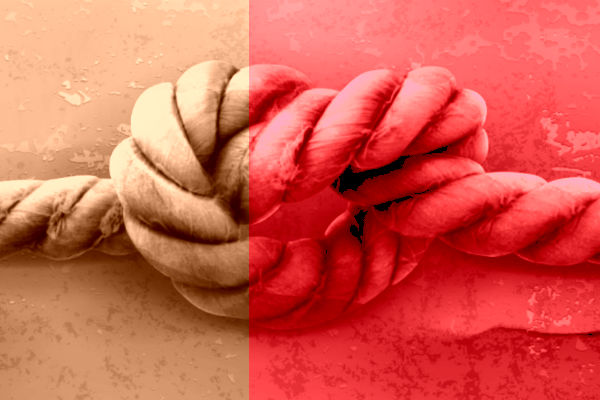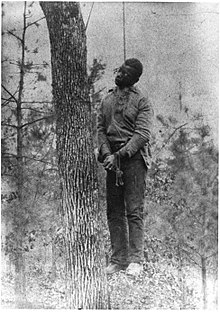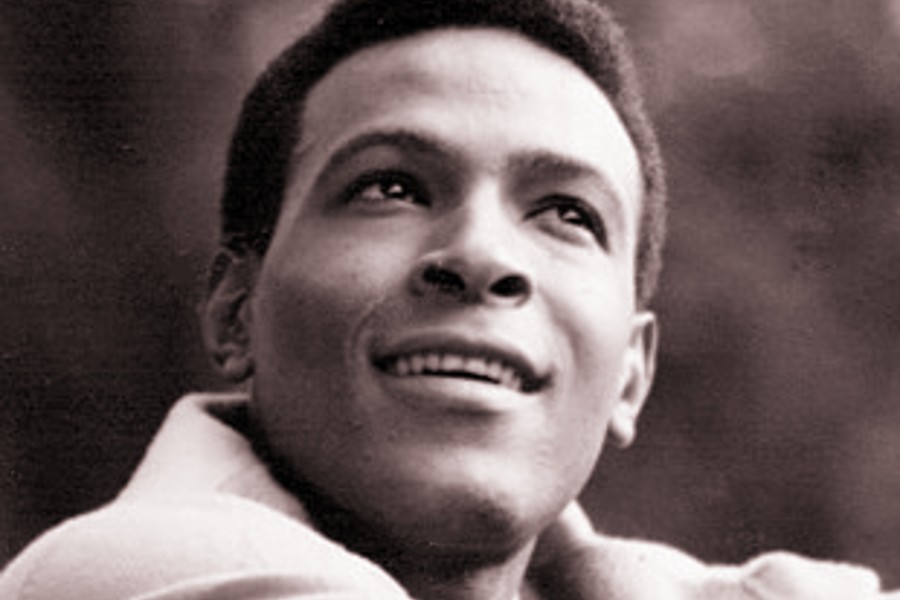 Note: Ms. Grey offers this work as a living document, not complete, and in process. She looks forward to developing the work through dialogue. We commend her bravery in this regard and invite you to participate.
Note: Ms. Grey offers this work as a living document, not complete, and in process. She looks forward to developing the work through dialogue. We commend her bravery in this regard and invite you to participate.
By Daseta Gray
I recently took an object relations class as a psychoanalysis student. We were told on the first day of class that we would need to write a short paper on one of the many articles that we would be reading.
During the course, we read several papers including one titled ‘Shame in the Family Relations of Borderline Patients’ (Lansky). In a previous class, I read ‘Mother-infant Attachment and Psychoanalysis: The Eyes of Shame’ (Ayers). While I was reading the Lansky paper, I began to see the conflict that shame stirred in humans, and that this conflict could be traced outside the walls of a treatment room. I drew this conclusion based on a documentary that I had watched the week before, titled ‘A Message from our Ancestors’. The documentary is about the British Slave Trade. How people are now enjoying the benefits gained from the brutal treatment inflicted upon their fellow man in the past was not discussed. I realized that; today’s descendants unconsciously collude to repress memories or authentic acknowledgment of how current privilege rests on the shame of the past. To see it triggers shame, and so privileged people entrench systems of denial and avoidance to protect themselves from experiencing unbearable shame.
I went to the class very excited about my metacognition. I told the instructor that I would be writing my paper on the slave traders and on shame, and how shame manifests itself today in our society. I explained that I had come to this conclusion after watching the documentary and reading the article the week before. My instructor thought that it was a good theory, but also told me to proceed with caution: “Daseta, I think that you should get to know one person and write about that person. You cannot write about a whole society”. As those words rolled off her tongue, I wondered blankly if my instructor was herself caught by shame, a thought supported by her failure to meet my gaze. I wondered, were her ancestors a part of the slave trade? Is she carrying her engrams from the past that prevent her from seeing the present clearly? The word ‘slavery’ brings up different emotions for people, depending on whether they are the oppressed or the oppressor, and on who you are talking to; they may feel like the world’s eyes are staring at them at that moment.
As the instructor tried to explain her thoughts, I observed that she continued to avoid full eye contact, even though I was sitting directly across from her. I kept wondering: ‘would my European instructor feel a sense of exposure if I were to write a paper on shame, on our racist society and how shame plays a role therein?’ A student chimed in: “Daseta, I think that would be a great paper”. I feel that many white people are shameful of what was done by their ancestors and live with this sense of shame. Looking at our society, we can see it today. I am not the only one who thinks that shame influences how our society operates – I borrowed the title for my paper from Mary Ayers. In the last sentence of her article, she uses the phrase: ‘Eyes of Shame in our Society’.
Let’s go back to the words of my instructor: “Daseta, you should get to know one person and focus on them”. This approach would be negating the whole person because people get their identities from the adults who surround them, along with the social mirror. I agree with Lansky who argues that people tend to skirt around the explanation of shame, but it is important to understand how to treat patients with severe character pathologies. He feels that ‘borderline’ is not a good term for this pathology, he refers to it as unfortunate. It is important to look at the family origins because one cannot understand a pathology if they do not have a clear understanding of how shame is handled in the subject’s family.
I will be discussing how shame and racism go hand in hand. In the 1800s, the slave trade was at its peak, and immoral people were a significant part of the trade. These individuals were God-fearing but had the ability to treat their fellow man without any regard for their well-being. They could avoid shame by employing dehumanizing defenses which prevented them from identifying with the slaves as fellow human beings. Mary Ayers has a few definitions for the word shame, although she points out that ‘shame’ is not a well-studied emotion, it is rarely discussed, it is, however, one of the “deepest, most fundamental emotional experiences for all humankind”, and “it has become a blind spot in psychological discourse”. She feels that there has not been a concentrated analysis on how the human eye has an impact on shame.
Ms. Ayers offers several explanations on how we learn about shame and its internalization. She suggests that it begins between the mother and the infant; the mother’s gaze at her baby can signify terror or love. The mother’s eye that generates shame is hollow and becomes an empty mirror, or it can be like a camera that only sees what lies on the surface. There is a myriad of facets to shame and it impacts individuals in different ways. These individuals then become a part of their society. At that point, Mary Ayers indicates that societal and personal issues intersect with the effects of shame. According to Ayers, shame is both a personal feeling of self-conception as well as being the way you view others. Reading this left me wondering how racism and shame have had an impact on mankind, and how shame plays an important role in how racism affects us today. Shame is buried within individuals who make up families, and these families make up our society. Shame is manifested in the different phases of white rage in our society today.
Racist systems tend to manage shame by using the oppressed as their object, by blaming them for their behaviors or their reactions to a system which was designed by their forefathers. The following is an example of this in the prison system: Michelle Alexander argues that the caste system operates as the new ‘Jim Crow’, it does not act independently but serves as the gateway to larger systems of racial stigmatization and permanent marginalization. She calls the system mass incarceration, which not only locks people up behind bars – but also behind walls that are invisible to the naked eye; this practice tends to function in the same way as the Jim Crow laws.
Mary Ayers made a distinction between the kinds of shame one has: the overt, where the individual is consciously experiencing shame, and unacknowledged shame, where shame has been experienced but the individual remains unconscious of it. The mass incarceration system behaves in a shameful manner but is not able to acknowledge it because the shame is being committed virtually, the system does not need to make ‘direct eye contact’ and see the full repercussions. The major elements at play here are shame, its exposure and the creation of an invisible oppressive system the creator will not be exposed to. However, the people undergoing oppression by these systems have the society’s eyes posed on them, everybody can see them. These eyes of the world can be compared to a terrible mother, these eyes are hollow, terrible and allow the systems of racism to continue, by averting their gaze away from the inequities in the system and focusing it on the oppressed.
When shame meets the conscious: I recently read ‘Gather at the Table’ (DeWolf & Morgan), and it is a fascinating read. The story is about the meeting of a son of a slave trader and a daughter of slavery. In the book, the character Sharon discusses the violence that she learns her family went through and the violence within her family itself. She recalls telling her father about wanting to trace her family tree, and how he is not supportive: “No one spoke about slavery in my family”. She felt like there was shame associated with that part of her family history. Shame affects people on all sides in our society, both the oppressed and the oppressors. Shame causes anxiety among the oppressed. It can affect the nervous system and can manifest danger in the ego system. During her research, Sharon discovers that many Black people did not pass down slave stories to their families because the system of slavery in America was so brutal, the oppressors convinced themselves that black people were not humans. Therefore, each time one cruel law ran its course they created another one to replace it. The systems usually sanction these oppressive behaviors.

The system had no shame because they saw Blacks as non-human and invisible. Shame carries a two-fold meaning, according to Mary Ayers it has the power to annihilate and disintegrate the self, but also to safeguard physical life by making self-awareness possible. The oppressive system usually uses shame to destroy the oppressed, Black people. A good example of this can be taken from the period between 1882 – 1968, where almost 3,500 Black people were lynched at ‘picnics’, events where families and school children, let out of school, would gather together with picnic baskets. Philip Dray, a historian, wrote that “the experience of having witnessed the event was thought of as incomplete if one did not go home with some piece of cooked human being, and there is evidence of lynching crowds either consuming food or drink while taking part in the execution or returning en masse immediately after the meal”.
One wonders what kind of pathology the attendees and the persons committing the crime must have suffered from. Different accounts have the power to convey different meanings, but I consider that these lynch mobs did not see their victims as humans, and thus they felt no shame. The victims and their families expressed their shame through a series of emotions, anxiety, humiliation and disgrace (Ayers). Also, arguably shame cannot be removed, societal shame can be expressed through violence and therefore violence against Blacks has continued while systems stood by and allowed it. They saw Black people as being invisible, so that although they were committing murder, they expressed no humanity. The mobs had no eyes because they had turned themselves blind to cover their shame. Shame usually looks at the inner self. It appears that these people were empty. Shame is also manifested in our society via different avenues. We saw shame manifest itself after slavery through violence, state laws, medical experimentation, eugenics, terror campaigns, land grabs, racial anthropology, and race riots. Today, the past has become the future. The Black community is plagued with violence that is caused by unresolved shame from society.
The character Sharon from ‘Gather at the Table’ reminds us that slavery states like Oregon and many other states had laws forbidding Blacks from living there. There were also the Black Codes preventing Blacks from working on certain jobs, the intentional denial of opportunities that hindered possible social ascension. In the book ‘White Rage’ (Anderson), the author argues that white rage is manifested in the systems that are created to prevent Blacks from progressing forwards. White criminals who committed crimes against Blacks were not prosecuted because the “White man could do that”. These crimes included murder, rape and robbery.
Shame is one of the major human emotions. Mary Ayers indicates that through shame we meet and avoid the gaze of others, and that oppressors are somehow void of those inner eyes that should be used to scrutinize oneself. Our society carries out the same practice in the form of white rage. Some theorists believe that shame begins during your early years depending on the mirroring that the child passes on to the mother, and that this depends on the maturity of the mother. Shame is defined differently by different writers. However, regardless of its definition shame in society can cause the destruction of self-humiliation, aggression and actual shame or being ashamed of a sense of shame (Ayers).
In the book ‘Gather at the Table’, the authors, one a son of a former slave trader and one the daughter of a former slave, look into each other’s inner eyes. According to Ayers, knowing shame leads to a deeper understanding of what it means to be a human, vulnerable self. Just like the good mother looking at an infant with full eye contact, being able to look at your inner self while reflecting on the outer self will give shame the power to heal. Shame can also be amplified, it can conceal, repel, destroy, and it can also create. Our society needs to acknowledge its shame to begin the healing process.
Dr. Howard Zehr, Professor of Restorative of Justice at Eastern Mennonite University, dictates that the concept of justice is mainly concerned with fairness and balance. It also entails proposing consequences for what has been done: consequences that are often painful. He believes that restorative justice can help to reframe the discussion of historic slavery, racism, privilege, and present-day inequities. First, you will need to acknowledge your feelings of shame, to use your inner eyes, to recognize the harm that has been done and then the need to come out of that harm when we wish to repair it. You will need to engage with others with a vested interest and who should be involved in the resolution (Berry).
The problems of racism, crime, violence and mass incarceration rarely make the connection between slavery and privilege. White people live in denial because this is the best way to avoid shame and to avoid bringing it to consciousness. Many Black families today do not want to speak about slavery and Whites do not want to speak about the horrors that their forefathers committed, as they continue to reap the benefits of these atrocities.
Ayers shared with us that shame can be archaic in primitive form, its anxiety appears long before the Oedipus complex. Shame and anxiety constitute the fear of total object loss and self-loss. Societal and personal issues intersect with the effects of shame. Shame is both an intimate feeling of self-conception as well as a social conception of facing others. The privileged express white rage by trying to avoid facing others, due to feelings of shame. Dr. Zehr believes that for our society to end racism and begin the healing process from trauma and the legacy of slavery, “we need to see that slavery is an important part of who we were then and how we are now. Guilt and shame get in the way. American’s identity as ‘do-gooders’ and we are out to save the world” (Zehr in Berry) complicates things. One key part is educating ourselves honestly. Our identity as a nation is tied up in our stories. Understanding our narratives about slavery will be an important factor in the healing process.
I agree with the doctor, however, that the families who make up our society as descendants of the oppressors and the oppressed are both suffering from shame. The people who enjoy the privilege to keep saying ‘it was my ancestors, not me,’ or ‘my ancestors had nothing to do with it’. You must note that the engrams were passed down by the oppressors and the oppressed and there will always be a conflict between the groups until this shame is recognized. We need to acknowledge this and see things for how they really are.
Shame begins very early during the infant/toddler years. Shame can be amplified in society. We know that whiteness and racism is a construct that it was created as a means of control, and as time passed it became embedded in our psyche. In the book ‘The Future of Whiteness’, Linda Alcoff reminds us that race, just like whiteness, was created by humans for a purpose and because of this, it can change over time. It is not fixed forever. However, to change it we must bring shame to our consciousness, by engaging in open, honest discussion and by recognizing that there is a clear sense of right and wrong. I hope that in my lifetime our country will leap bounds ahead by admitting the shame within themselves and looking with their inner eyes. Shame is managed best eye to eye.
Olukemi Amala reminds us that the dominant culture (oppressors) must openly discuss how social oppression affects mental health. She reminds us that we learn our identities and self-worth based on the approval or disapproval of others. These messages begin with primary caregivers, mass media in infancy, childhood through adulthood. These messages can validate, promote and value, or they can dismiss, marginalize and ignore aspects of our lives. Hence, we can learn self-importance and value, or indeed guilt and shame.
Daseta Gray, M.Ed, Certified Infant/Toddler Specialist, in addition, Ms. Gray is a student at the Harlem Family Institute and a certified infant/toddler specialist with a special interest in brain development.
Photo credit: Lynching date unknown Wikipedia.
Become a Harlem Insider!
By submitting this form, you are consenting to receive marketing emails from: Harlem World Magazine, 2521 1/2 west 42nd street, Los Angeles, CA, 90008, https://www.harlemworldmagazine.com. You can revoke your consent to receive emails at any time by using the SafeUnsubscribe® link, found at the bottom of every email. Emails are serviced by Constant Contact








